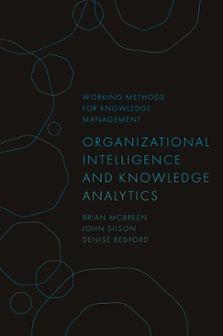
Index
Organizational Intelligence and Knowledge Analytics
ISBN: 978-1-80262-178-5, eISBN: 978-1-80262-177-8
Publication date: 18 January 2022
Citation
McBreen, B., Silson, J. and Bedford, D. (2022), "Index", Organizational Intelligence and Knowledge Analytics (Working Methods for Knowledge Management), Emerald Publishing Limited, Leeds, pp. 203-208. https://doi.org/10.1108/978-1-80262-177-820211019
Publisher
:Emerald Publishing Limited
Copyright © 2022 Brian McBreen, John Silson, and Denise Bedford
INDEX
- Prelims
- Section 1. Knowledge and Intelligence
- Chapter 1: Intelligence in Knowledge Economies and Organizations
- Chapter 2: Traditional Intelligence Work
- Chapter 3: Intelligence Work for the Knowledge Economy
- Chapter 4: Knowledge Capital as an Intelligence Source
- Section 2. New Intelligence Capabilities
- Chapter 5: The Design Capability
- Chapter 6: Analysis Capability
- Chapter 7: The Automate and Operationalize Capability
- Chapter 8: The Accelerate Capability
- Section 3. Sustaining the Intelligent Organization
- Chapter 9: Capacity Building for Organizational Intelligence and Analytics
- Chapter 10: Organizational Intelligence Roles, Responsibilities, and Competencies
- Chapter 11: Crafting and Sustaining an Organizational Intelligence Strategy
- Chapter 12: Business Stories of Intelligent Organizations
- Appendix A: Pulling it all Together – Sample Project Plan
- Appendix B: Toolkit of Analytical Methods
- Index